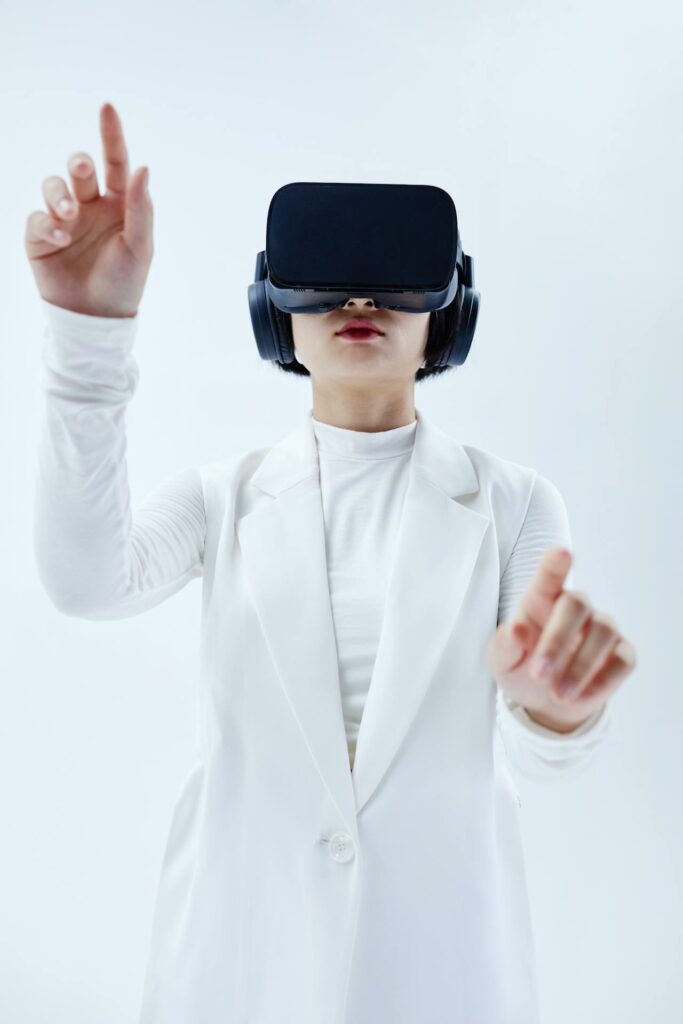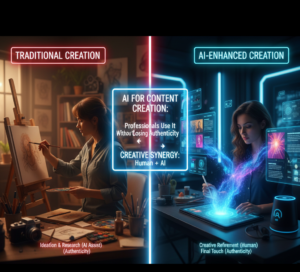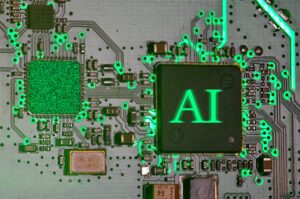How the combination of text image and audio is redefining intelligence in the year 2025: the rise of multimodal artificial intelligence

How the combination of text image and audio is redefining intelligence in the year 2025: the rise of multimodal artificial intelligence
There has been a significant advancement in artificial intelligence since it was first used to do solitary tasks like as identifying faces, answering questions, or translating languages. In the year 2025, we are seeing a wonderful development: the growth of multimodal artificial intelligence, which refers to systems that are able to comprehend and generate across many forms of data simultaneously. These data include text, photos, audio, video, and even sensory inputs such as touch or temperature. Not only are these models more intelligent, but they also have a more human-like way of seeing and reacting to the environment around them.
Through the combination of various data modalities, new horizons are being opened up in the areas of creativity, communication, accessibility, and automation systems. The way in which we connect with technology, as well as the way in which technology understands us, is being altered as a result.
Can You Explain What Multimodal AI Is?
Multimodal artificial intelligence, at its heart, refers to systems that are able to analyze and link information from diverse modalities or kinds of input. For example, mixing visual signals with spoken language or reading a paper while evaluating the tone of the speaker’s voice are both examples of multimodal communication scenarios. For humans, this is a natural ability. The act of watching a movie allows us to construct a coherent comprehension by incorporating elements such as speech, pictures, music, facial emotions, and even context. The goal of multimodal artificial intelligence is to duplicate this capacity.
These systems are trained on enormous datasets that comprise mixtures of text, pictures, audio, and other types of input rather than developing distinct models for each job individually. The end result is a unified model that is capable of providing an answer to a query about a photograph, performing a real-time description of a video, producing artwork in response to a voice command, and translating sign language into spoken words.
Why Multimodality Is More Important Than It Has Ever Been
It is not the case that the actual world is composed of isolated signals; we do not live in an environment that is just composed of audio or text. However, until quite recently, the majority of AI systems were “single-modality” tools. A chatbot was able to communicate, but it was unable to “see.” An picture may be labeled by a vision model, but it would not be able to describe the image using normal language.
The multimodal AI system alters that. Not only does it make systems more helpful, but it also makes them easier for people to deal with since they are more intuitive and intuitive. You are able to communicate with your artificial intelligence assistant, provide it with a screenshot, and ask it to summarize or mend anything, and it will comprehend all of this information as a component of a unified job.
An Overview of the Workings of Multimodal Models: A Look Behind the Scenes
Multimodal models usually incorporate designs from a variety of different fields, such as vision transformers (for the purpose of picture comprehension), natural language processing models (for the purpose of writing), and convolutional or audio-specific layers (for the purpose of listening to sound). Afterwards, these components are trained either jointly or in phases using datasets that include combinations of all modalities for the purpose of training.
Shared embeddings are also used by some more modern models. This means that these models map all different kinds of inputs into a single space where connections may be examined. As an example, the term “dog,” a picture of a dog, and the sound of a dog barking might all be connected to one another in the model’s internal understanding by relative closeness. The use of this shared representation makes it possible to engage in flexible interactions, such as the generation of sounds from a video, the creation of a picture from a description, or the captioning of an image.
Case Studies That Are Changing People’s Lives
1. More Intelligent Assistants
Voice assistants are able to comprehend the environment around them thanks to multimodal artificial intelligence. If you show your assistant a picture of a recipe and ask it, “Do I have all of these ingredients?” it will be able to identify the contents, match them with the ones on your pantry list, and even suggest appropriate substitutions.
2. Innovative Instruments for Healthcare
Multimodal systems allow for the analysis of medical scans (pictures), patient histories (text), and voice recordings (audio notes) all at the same time. This allows for more accurate diagnosis, particularly in more complicated situations that include numerous symptoms or sensory inputs.
3. Technologies that are both accessible and inclusive
Users who have impairments may benefit from the game-changing help that multimodal AI provides. A description of what is occurring on the screen, the translation of spoken commands into visuals in sign language, and the generation of real-time captions with emotional tone recognition are all capabilities that it has.
4. Co-Pilots Who Are Creative
Currently, designers, authors, and musicians are making use of artificial intelligence that can reply to designs as well as prompts. The system will combine the rough picture that you draw and the description of what you want to create in order to produce refined work, so changing the processes that are used in design.
Key Players and Rapid Advancement in the Field
During the last two years, there have been some of the most significant developments in multimodal artificial intelligence. New models are able to take a picture, a block of text, and an audio clip and interpret all of them simultaneously, so comprehending context and purpose with a level of subtlety that is astonishing. Currently, these systems are being used in a variety of applications, including video editing, scientific research, customer service bots, and even autonomous cars that are required to comprehend visual, spatial, and verbal information simultaneously.
By the year 2025, this movement is being supported by both the most prestigious research laboratories and inclusive communities. At a time when supercomputers were necessary, it is now possible to operate it on consumer-grade hardware or via cloud APIs, making it more accessible than it has ever been.
Difficulties Presented by Multimodal Systems
Despite the remarkable progress that has been made, multimodal artificial intelligence still confronts significant challenges:
- The training data must be synced across all modalities in order to achieve data alignment. The model may get confused if the description does not match the image or if the audio recording is not in sync.
- When multiple kinds of data are combined, it does not remove bias; rather, it may potentially exacerbate it if it is not managed appropriately. This is because of the way that representation works.
- These models are big, need massive datasets, and require sophisticated hardware in order to train and execute effectively. The computational complexity of these models is not to be underestimated.
- Efforts are being made by researchers to improve the efficiency, ethics, and interpretability of models in order to ensure that their implementation will be beneficial to society in its whole.
Rather of being segmented, the future is seamless.
Soon, you won’t have to give any thought to whether you are using text, speech, or picture input. This will be the case in the near future. Multimodal artificial intelligence systems will simply comprehend what it is that you are attempting to say and will react appropriately. What would it be like to wear smart glasses that not only see what you see but also hear what you hear and provide assistance in real time? Alternatively, artificial intelligence technologies that can smoothly transition between visual art, audio, and narrative.
This confluence of modalities is resulting in the creation of a new generation of artificial intelligence that more nearly resembles human comprehension than ever before. It is not enough to just develop more intelligent robots; rather, it is necessary to develop technology that is more human-centric and can adjust to the way that people naturally think, talk, perceive, and feel.
A New Chapter in the Development of Artificial Intelligence
A significant step forward in the field of artificial intelligence is represented by the development of multimodal AI. Through the integration of language, pictures, music, and other elements into a unified framework, we are moving toward a new era in which robots will be able to experience the world in the same manner that people do. It does not matter whether you are a designer, a doctor, a teacher, or even simply someone who uses their phone; this technology is already fundamentally altering the way in which we live and work.







